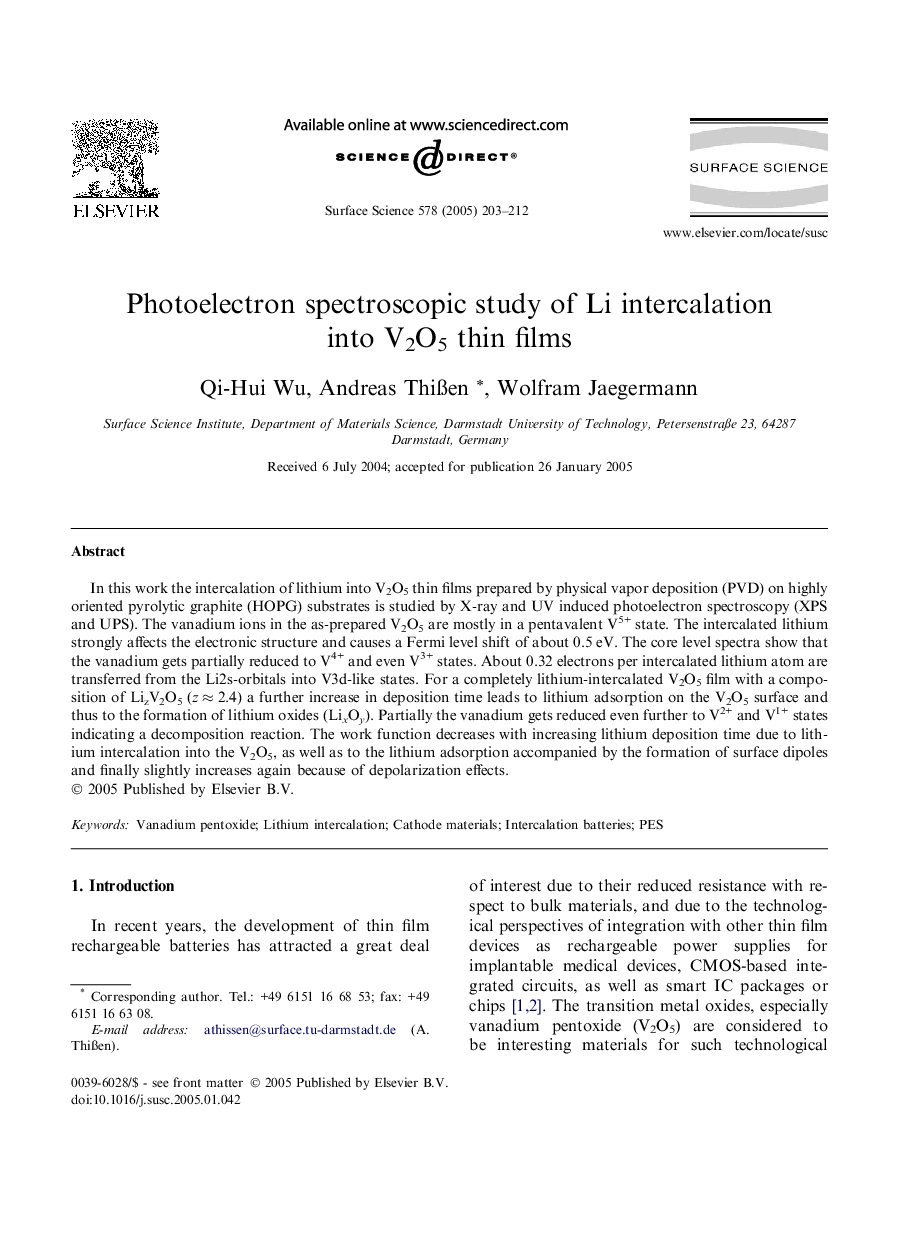| Article ID | Journal | Published Year | Pages | File Type |
|---|---|---|---|---|
| 9595706 | Surface Science | 2005 | 10 Pages |
Abstract
In this work the intercalation of lithium into V2O5 thin films prepared by physical vapor deposition (PVD) on highly oriented pyrolytic graphite (HOPG) substrates is studied by X-ray and UV induced photoelectron spectroscopy (XPS and UPS). The vanadium ions in the as-prepared V2O5 are mostly in a pentavalent V5+ state. The intercalated lithium strongly affects the electronic structure and causes a Fermi level shift of about 0.5 eV. The core level spectra show that the vanadium gets partially reduced to V4+ and even V3+ states. About 0.32 electrons per intercalated lithium atom are transferred from the Li2s-orbitals into V3d-like states. For a completely lithium-intercalated V2O5 film with a composition of LizV2O5 (z â 2.4) a further increase in deposition time leads to lithium adsorption on the V2O5 surface and thus to the formation of lithium oxides (LixOy). Partially the vanadium gets reduced even further to V2+ and V1+ states indicating a decomposition reaction. The work function decreases with increasing lithium deposition time due to lithium intercalation into the V2O5, as well as to the lithium adsorption accompanied by the formation of surface dipoles and finally slightly increases again because of depolarization effects.
Related Topics
Physical Sciences and Engineering
Chemistry
Physical and Theoretical Chemistry
Authors
Qi-Hui Wu, Andreas ThiÃen, Wolfram Jaegermann,
